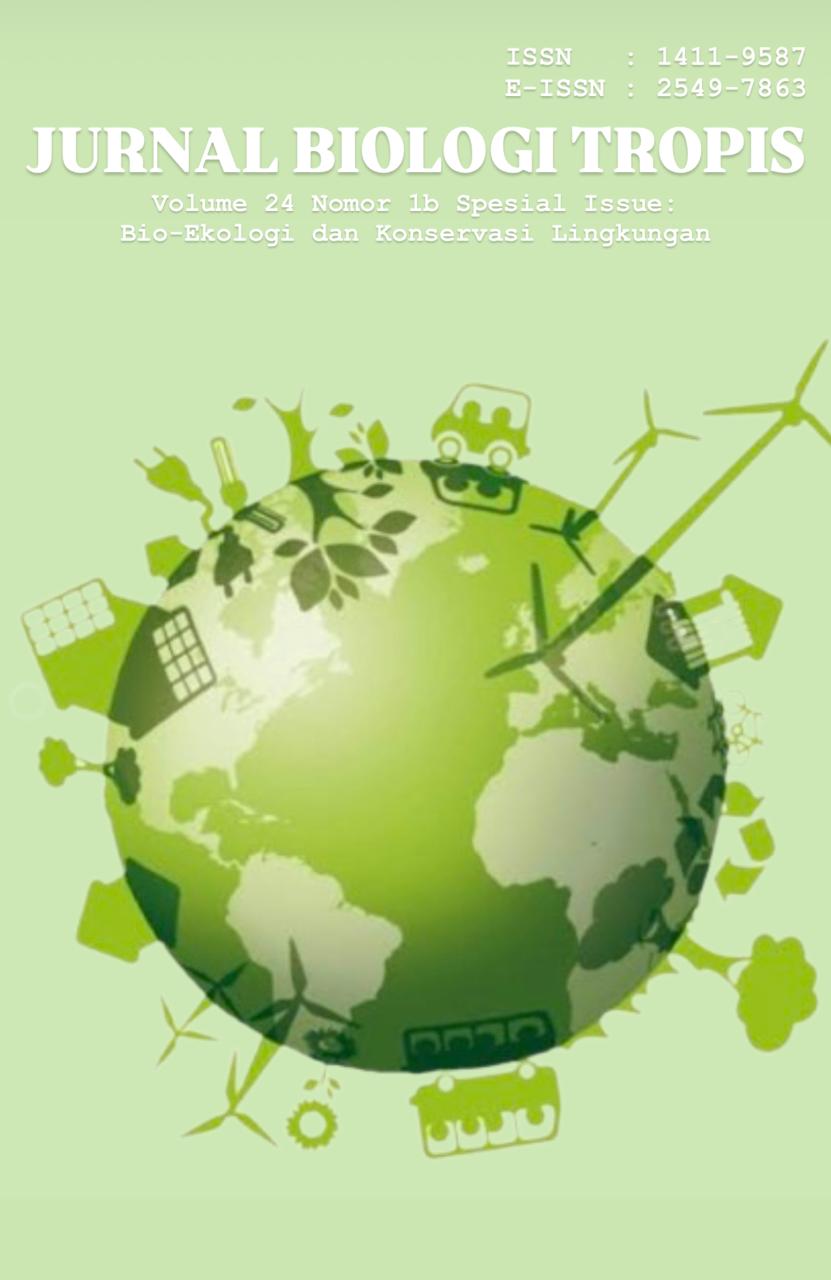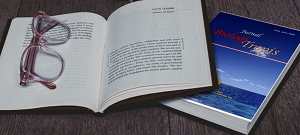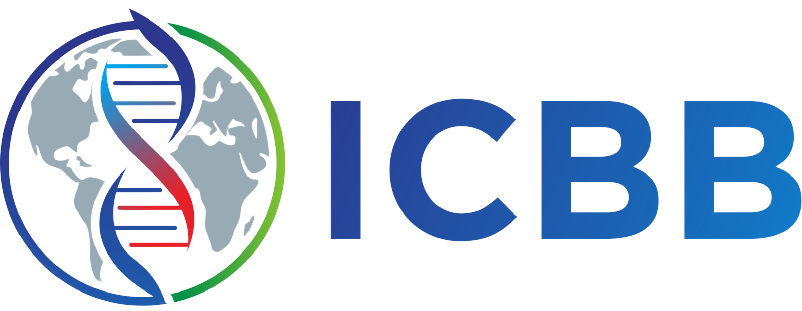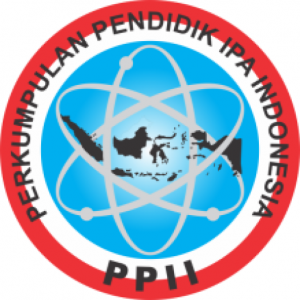Impact of Steam Power Plant X Wastewater Disposal on Phytoplankton Community Structure and Coastal Water Quality in South Lampung
Authors
Melati Rizki Ramadhina , Gregorius Nugroho Susanto , Salman Alfarisi , Tugiyono TugiyonoDOI:
10.29303/jbt.v24i2b.8027Published:
2024-12-26Issue:
Vol. 24 No. 2b (2024): Special IssueKeywords:
Plankton, steam power plants, wastewater.Articles
Downloads
How to Cite
Downloads
Metrics
Abstract
Steam power plant is a power plant that uses steam energy as the main turbine engine to produce electricity. Most steam power plant are built in coastal areas because it requires water for its utilization as waste heat or coolant from the surrounding environment. The construction of steam power plant in coastal areas has caused several issues, such as hot water waste, coal waste, mud, sand, and others that can affect the quality of coastal waters and alter the biological composition in the ocean. The purpose of this research is to determine the impact of Steam Power Plant X wastewater disposal on the phytoplankton community structure and coastal water quality in South Lampung. The sampling points were taken at 3 stations in March-April 2024. Water samples were analyzed using 3 parameters: physics, chemistry and biology, with seven optional parameters measured both ex situ and in situ, namely pH, temperature, salinity, brightness, TSS, nitrate and plankton. Based on the results, the disposal of wastewater from Steam Power Plant X has an impact on the phytoplankton community structure, resulting an increase in dominance of phytoplankton species and causing an increase in physical parameters such as temperature and brightness that exceed environmental quality standards.
References
Amri, K., Ma’mun, A., Priatna, A., Suman, A., Prianto, A., & Muchlizar, M. (2020). Sebaran spasial, kelimpahan dan struktur komunitas zooplankton di estuari Sungai Siak serta faktor-faktor yang mempengaruhinya. Jurnal Akuatika Indonesia, 5(1), 7-20. Doi: 10.24198/jaki.v5i1.26504.
Ananta, C. D., Nuraini, R. A. T., & Pratikto, I. (2021). Jenis Fitoplankton di Perairan Sekitar PLTU Tambak Lorok Semarang. Journal of Marine Research. 10(1), 123-130. Doi: 10.14710/jmr.v10i1.27790.
Arielta, M. R., & Salwiyah, S. (2024). Phytoplankton Composition in Waters Around Hot Water Wate of Steam Electricity Power Plant Nii Tanasa. Jurnal Biologi Tropis, 24(1), 526-535. Doi: http://dx.doi.org/10.29303/jbt.v24i1.6583
Begon, M., Townsend, C. R., & Harper, J. L. (2006). Ecology: From Individuals to Ecosystems (4th ed). Blackwell Publishing.
Beyrend-Dur, D., Kumar, R., Rao, T. R., Souissi, S., Cheng,S. H., & Hwang, J. S. (2011). Demographic parameters of adults of Pseudodiaptomus annandalei (Copepoda: Calanoida): temperature salinity and generation effects. Journal of Experimental Marine Biology and Ecology, 404(1-2), 1-14. Doi: https://doi.org/10.1016/j.jembe.2011.04.012.
Cahyana, C. (2015). Model Sebaran Panas Air Kanal Pendingin Instalasi Pembangkit Listrik ke Badan Air Laut. Dalam: Prosiding Seminar Nasional Teknologi Pengelolaan Limbah IX, Pusat Teknologi Limbah Radioaktif-BATAN dan FT-Universitas Sultan Ageng Tirtayasa (Vol.5, pp.293-302). Retrieved from https://www.academia.edu/download/33944399/digital_20295063-T29864-Model_sebaran.pdf.
Campbell, N.A dan Reece, J.B. (2012). Biologi Edisi 8 Jilid 2. Jakarta: Erlangga.
Dewa, C., Susanawati, L. D., & Widiatmono, B. R. (2016). Daya tampung Sungai Gede akibat pencemaran limbah industri tepung singkong di Kecamatan Ngadiluwih Kabupaten Kediri. Jurnal Sumberdaya Alam dan Lingkungan, 2(1), 35-43. Retrieved from https://jsal.ub.ac.id/index.php/jsal/article/view/162.
Fitrianti, F. B., Ario, R., & Widianingsih, W. (2022). Struktur Komunitas Fitoplankton di Perairan Pantai Megaproyek PLTU Batang, Jawa Tengah. Journal of Marine Research. 11(3), 437-445. Doi: https://doi.org/10.14710/jmr.v11i3.31697.
Handoko, H., Yusuf, M., & Wulandari, S. Y. (2013). Sebaran nitrat dan fosfat dalam kaitannya dengan kelimpahan fitoplankton di Kepulauan Karimunjawa. Journal of Oceanography, 2(3), 198-206. Retrieved from https://ejournal3.undip.ac.id/index.php/joce/article/view/4553.
Hidayat, D., Elvyra, R., & Fitmawati, F. (2015). Keanekaragaman Plankton di Danau Simbad Desa Pulau Birandang Kecamatan Kampar Timur Kabupaten Kampar Provinsi Riau. Jurnal Online Mahasiswa Fakultas Matematika dan Ilmu Pengetahuan Alam Universitas Riau, 2(1), pp.115-129. Retrieved from 186593-ID-keanekaragaman-plankton-di-danau-simbad.pdf.
Indraswari, B., Aunorohim, A., & Muzaki, F. K. (2015). Struktur Komunitas Fitoplankton di Perairan yang Terdampak Air Bahang PLTU Paiton Kabupaten Probolinggo Jawa Timur. Jurnal Sains dan Seni ITS, 4(2), E25-E31. Doi: 10.12962/j23373520.v4i2.13424.
Kadir, M. A., Damar, A., dan Krisanti, M. (2015). Dinamika spasial dan temporal struktur komunitas zooplankton di Teluk Jakarta. Jurnal Ilmu Pertanian Indonesia, 20(3), 247-256. Doi: 10.18343/jipi.20.3.247.
Keputusan Menteri Negara Lingkungan Hidup Nomor 115 Tahun 2003 Pasal 1 tentang Pedoman Penentuan Status Mutu Air.
Megawati, C., Yusuf, M., & Maslukah, L. (2014). Sebaran Kualitas Perairan Ditinjau Dari Zat Hara, Oksigen Terlarut Dan Ph Di Perairan Selat Bali Bagian Selatan. Journal of Oceanography, 3(2), 142-150. Retrieved from http://ejournal-s1.undip.ac.id/index.php/jose.
Peraturan Pemerintah Republik Indonesia Nomor 22 Tahun 2021 Tentang Penyelenggaraan Perlindungan dan Pengelolaan Lingkungan Hidup.
Prasiwi, I., & Wardhani, E. (2018). Analisis hubungan kualitas air terhadap indeks keanekaragaman plankton dan bentos Di Waduk Cirata. Rekayasa Hijau: Jurnal Teknologi Ramah Lingkungan, 2(3). Doi: https://doi.org/10.26760/jrh.v2i3.2510.
Rahayu, Y. P., Adi, R. A., Priyambodo, D. G., Puspita, C. D., & Triwibowo, H. (2016). Kualitas air permukaan dan sebaran sedimen dasar perairan Sedanau, Natuna, Kepulauan Riau. Jurnal Segara, 12(1). Retrieved from http://ejournal-balitbang.kkp.go.id/index.php/segara/article/view/7655.
Reynolds, C. S. (2006). The Ecology of Phytoplankton. Cambridge: Cambridge University Press.
Sartimbul, A., Ginting, F. R., Pratiwi, D. C., Rohadi, E., Muslihah, N., dan Aliviyanti, D. (2021). Struktur komunitas fitoplankton pada perairan Mayangan Probolinggo, Jawa Timur. JFMR (Journal of Fisheries and Marine Research), 5(1), 146-153. Retrieved from http://jfmr.ub.ac.id.
Sirait, M., Rahmatia, F., & Pattulloh, P. (2018). Komparasi indeks keanekaragaman dan indeks dominansi fitoplankton di sungai Ciliwung Jakarta. Jurnal Kelautan: Indonesian Journal of Marine Science and Technology, 11(1), 75-79. Doi: http://doi.org/10.21107/jk.v11i1.3338.
Subardjo, P. & Ario, R. (2015). Penyebaram Limbah Air Panas PLTU di Kolam Pelabuhan Semarang. Jurnal Kelautan Tropis. 18(3), 178-173. Doi: https://doi.org/10.14710/jkt.v18i3.531.
Subardjo, P., Ario, R., & Handoyo, G. (2016). Pola Persebaran Limbah Panas PLTU di Kolam Pelabuhan Tambak Lorok Semarang. Jurnal Kelautan Tropis. 19(1), 48-54. Doi: https://doi.org/10.14710/jkt.v19i1.600.
Suryanto, A. M. (2011). Kelimpahan dan komposisi fitoplankton di Waduk Seloreso Kecamatan Ngantang Kabupaten Malang. Jurnal Kelautan, 4(2), 34-39. Doi: https://doi.org/10.21107/jk.v4i2.877.
Susila, I. M. A. D., Faridha, F., Lestari, E., Adilla, I., Magdalena, M., dan Sihombing, A. L. S. (2016). Dampak biologis limbah bahang terhadap biota perairan di sekitar Pembangkit Listrik Tenaga Uap Suralaya. Ketenagalistrikan dan Energi Terbarukan, 10(1), 35-50.
Wibowo, M., & Asvaliantina, V. (2018). Kajian dispersi panas akibat air limbah rencana pembangunan PLTU Kuala Tungkal-Provinsi Jambi. Jurnal Teknologi Lingkungan, 19(1), 1-12. Retrieved from https://www.academia.edu/download/79694905/pdf.pdf
Widiadmoko, W. (2013). Pemantauan kualitas air secara fisika dan kimia di Perairan Teluk Hurun. Bandar Lampung: Balai Besar Pengembangan Budidaya Laut (BBPBL) Lampung. Politeknik Negeri Lampung.
License
Copyright (c) 2024 Melati Rizki Ramadhina, Gregorius Nugroho Susanto, Salman Alfarisi, Tugiyono Tugiyono

This work is licensed under a Creative Commons Attribution 4.0 International License.

Jurnal Biologi Tropis is licensed under a Creative Commons Attribution 4.0 International License.
The copyright of the received article shall be assigned to the author as the owner of the paper. The intended copyright includes the right to publish the article in various forms (including reprints). The journal maintains the publishing rights to the published articles.
Authors are permitted to disseminate published articles by sharing the link/DOI of the article at the journal. Authors are allowed to use their articles for any legal purposes deemed necessary without written permission from the journal with an acknowledgment of initial publication to this journal.


























